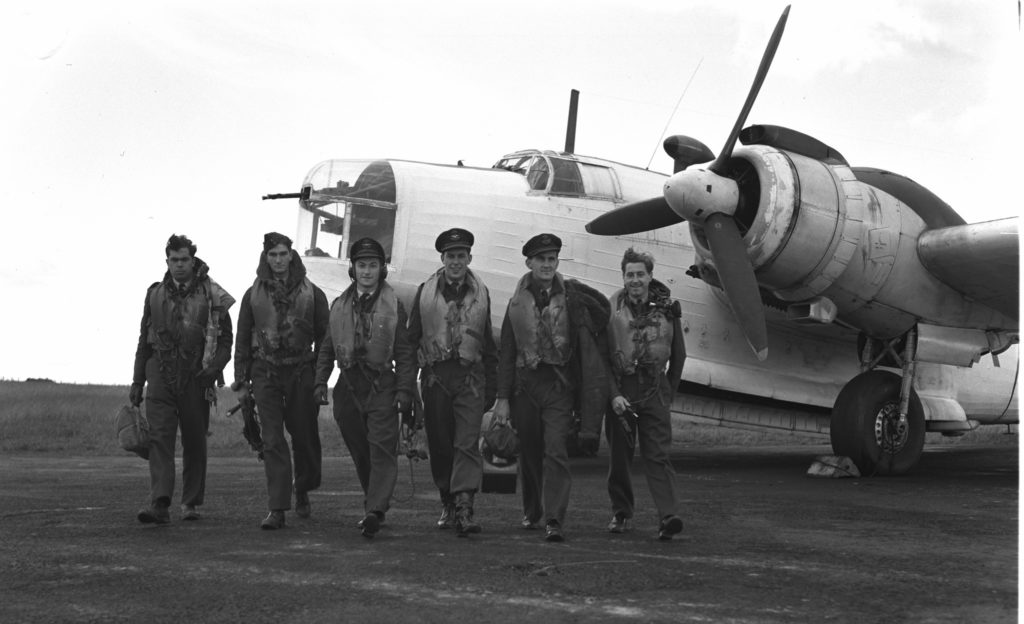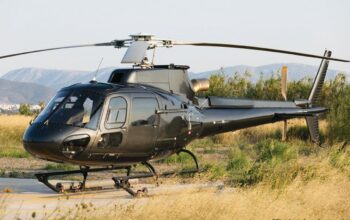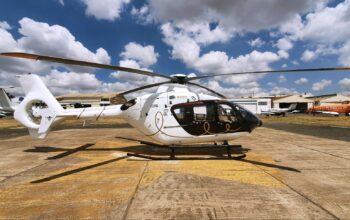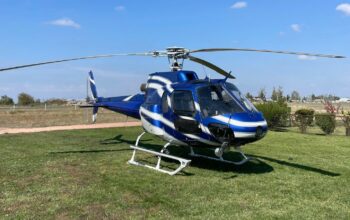Estimated reading time 9 minutes, 22 seconds.
During the Second World War, the Royal Canadian Air Force (RCAF) provided six squadrons to serve with Royal Air Force (RAF) Coastal Command. Of those, five were directly involved in D-Day operations, although for most of the squadrons the actual invasion day saw little contact with the enemy.

Formed on May 8, 1941, 407 “Demon” Squadron was the fourth RCAF squadron formed overseas and the second to join Coastal Command. Late on D-Day, the squadron launched two of its Wellington aircraft from its base at Chivenor, Devon. Of the two aircraft, only one came home safely. The other aircraft, piloted by Squadron Leader Desmond William Farrell, 29, from Senneville, Que., failed to return. Farrell and the other five members of his crew have no known grave and are commemorated on the Runnymede War Memorial in England.
413 Squadron, formed on July 1, 1941, and the third squadron attached to Coastal Command, was initially equipped with Catalina aircraft. However, in March 1942 it was transferred to Ceylon (now known as Sri Lanka) and was not present for the invasion of Normandy.
The Wellington aircraft of 415 “Swordfish” Squadron, operating from an airfield at Bircham Newton, Norfolk, were busy on D-Day. Formed on August 20, 1941, as the RCAF’s thirteenth overseas and the fourth Coastal Command unit, its role was to attack enemy shipping–a task it undertook with great gusto.
To interfere with the invasion, the Germany navy could muster over 100 small, fast motor torpedo boats, five destroyers and numerous small craft in the vicinity. Therefore, it was imperative that they be kept away from the landing area and Allied aircraft were sent out to conduct anti-shipping patrols. No enemy was seen, however, and all of the Swordfish Squadron aircraft returned safely.
The RCAF’s five and sixth Coastal Command squadrons, 422 and 423, were formed on April 2, 1942, and May 18, 1942, respectively. Both units operated Short Sunderland Mark III flying boats and in June 1944 they were based at Castle Archdale, Northern Ireland. A normal wartime patrol would last from 10 to 14 hours over the water, combining radar and the “Mark One Eyeball” to catch a glimpse of their elusive prey.
By D-Day, 422 and 423 Squadrons had already seen action; 422 Squadron sank a German submarine in March 1944, while 423 Squadron had claimed three U-boats destroyed and had shared another victory with surface ships of the Royal Canadian Navy and the Royal Navy.
On June 6, each squadron launched a single aircraft on an anti-submarine patrol, but the 422 Squadron Sunderland returned early due to weather while 423 Squadron’s mission was uneventful.
The first RCAF squadron allocated to Coastal Command was, however, the most heavily engaged of the RCAF’s coastal squadrons on D-Day. 404 “Buffalo” Squadron, formed on April 15, 1941, as the RCAF’s second overseas squadron, was equipped with rocket-armed Beaufighter torpedo bombers when it was placed on standby on June 6, 1944.

That status quickly changed. A report came in that three German “Narvik” class destroyers were steaming towards the English Channel. Crews were briefed mid-afternoon and at the 6:20 p.m. take-off time, 14 aircraft took to the air. They formed up with 17 Beaufighters from the Royal Air Force’s 144 Squadron, providing anti-flak protection, and eight Mosquitos from the RAF’s 248 Squadron providing fighter escort. On D-Day, It was the most heavily engaged Canadian Coastal Command squadron.
Although 404 Squadron sighted numerous targets on D-Day, the aircrew didn’t engage with any, since the squadrons had been briefed to attack only the destroyers. Finally, three destroyers were spotted in the vicinity of Belle Isle. Confused by the sudden appearance of the German vessels, the strike leader initially called off the assault, but the 404 Squadron lead, Flying Officer Sidney Simon Shulemson, from Montreal, recognized the primary target and shouted into his radio: “It is the target, attack, attack!” With this confirmation, the strike leader then ordered all of the aircraft to engage the enemy.
The Canadian aircraft went after the last two destroyers, leaving the lead vessel to the other squadrons. Four 404 Squadron Beaufighters launched their rockets at the rear destroyer and claimed several underwater hits. The remaining nine Canadian crews fired upon the middle destroyer and set it on fire. After releasing their rockets, all of the crews returned to rake their respective target’s superstructure with cannon fire, often closing to within a few hundred yards before opening fire. All of the German ships had been damaged when the attacking aircraft broke off to return home.
Immediately after landing, five of the Beaufighters were re-fueled and re-armed for a second attack. This second group was composed of new arrivals at the unit but, as noted in the squadron’s War Diary, they “performed like hardened veterans”. Finding the German destroyers was much easier on this second strike since the smoke and flames from the damaged ships could be seen for miles. All of the aircraft closed to within 350 metres before releasing their rockets and then turned to make another pass with their cannon. Satisfied that these vessels would pose no immediate threat to the Allied invasion, the victorious Beaufighters returned home.
Unbelievably, only one of the attacking aircraft was shot down; the crew survived the landing in the English Channel and were later rescued. Several of the Beaufighters suffered flak damage from the destroyers, but the damage to 404 Squadron aircraft was light. One 404 Squadron Beaufighter sustained a bullet-hole and one had its navigator’s window shot out. The shattered glass cut the navigator, Flight Sergeant P. McCartney. Amazingly this was the only “Buffalo” squadron casualty. Both the aircrew, and the ground crew who had turned around the Beaufighters so quickly, celebrated.
As well as these 400-series squadrons, 162 Squadron was on operations with Coastal Command on D-Day, flying out of Reykjavik, Iceland. The squadron, formed at Yarmouth, N.S., on May 19, 1942, and flying Canso aircraft, was originally part of Canada’s Home War Establishment. In January 1944 it was “loaned” to Coastal Command to provide air cover for the mid-Atlantic portion of convoy routes. In June and July 1944, 162 Squadron aircraft also operated from Wick, Scotland, providing additional anti-submarine forces to counter the U-boat threat to invasion forces. During that period, the squadron claimed four submarines sunk and shared in the destruction of a fifth. On June 24, 1944, Flight Lieutenant David Hornell led his crew in the successful destruction of a German submarine, but at the cost of his aircraft being shot down. For this action, and the subsequent struggle for survival by the crew that ultimately cost Hornell his life, he was awarded a posthumous Victoria Cross.

As the squadron was disbanded on August 7, 1945 and the post-war decision was made to only re-activate 400-series squadrons, 162 Squadron was eligible for a “Normandy” battle honour, but it was never awarded.
Although only one of the Canadian squadrons serving with Coastal Command was heavily engaged on D-Day, the other units serving in Europe would get their turn in the weeks that followed.
In total, Coastal Command flew over 130 sorties on D-Day and another 90 the following day. By the end of June the command had conducted 4,724, and 75 targets, both surface vessels and submarines, had been attacked. Many of these flights were “routine” patrols, but they kept the German navy, for the most part, away from Normandy. Throughout this period Coastal Command lost 60 aircraft to enemy action and other causes. Without a doubt these units earned their “Normandy” battle honour.









I believe that the 162 squadrons should still receive the Normandy battle honor!!
I agree that 162 Squadron should receive the Normandy battle honour. My father, Flight Lieutenant John B. Hodgson, served in 162 Squadron.
Would like to find any info on my father, who was seconded to RCAF costal command in catalinas. Unsure of his service number. Flt sgt clifford snowden corke. RAF. any info would be graetfully recieved. Many thanks
My father Sgt Guy Gratton was a WAG in the 162 Sqdn
My father LAC Joe Raymer was also a member of this squadron.
My father was also in this squadron LAC Norman Howard
My father served in the 162 Squadron LAC Norman Howard. They should absolutely still be awarded Normandy battle honor!!